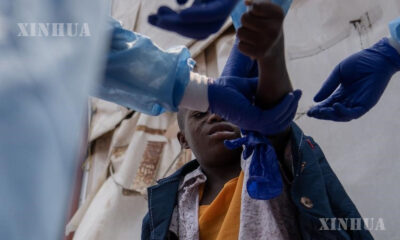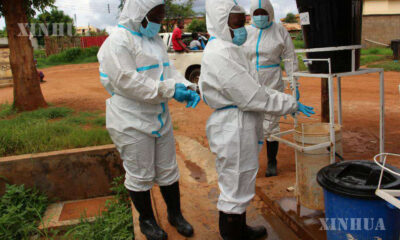Africa & Middle East
မျောက်ကျောက်ရောဂါကို ကမ္ဘာလုံးဆိုင်ရာ ပြည်သူ့ကျန်းမာရေးအရေးပေါ်အခြေအနေကြေညာထားပြီး ကြိုတင်ကာကွယ်ရေးအစီအမံများ အရှိန်မြှင့်ဆောင်ရွက်
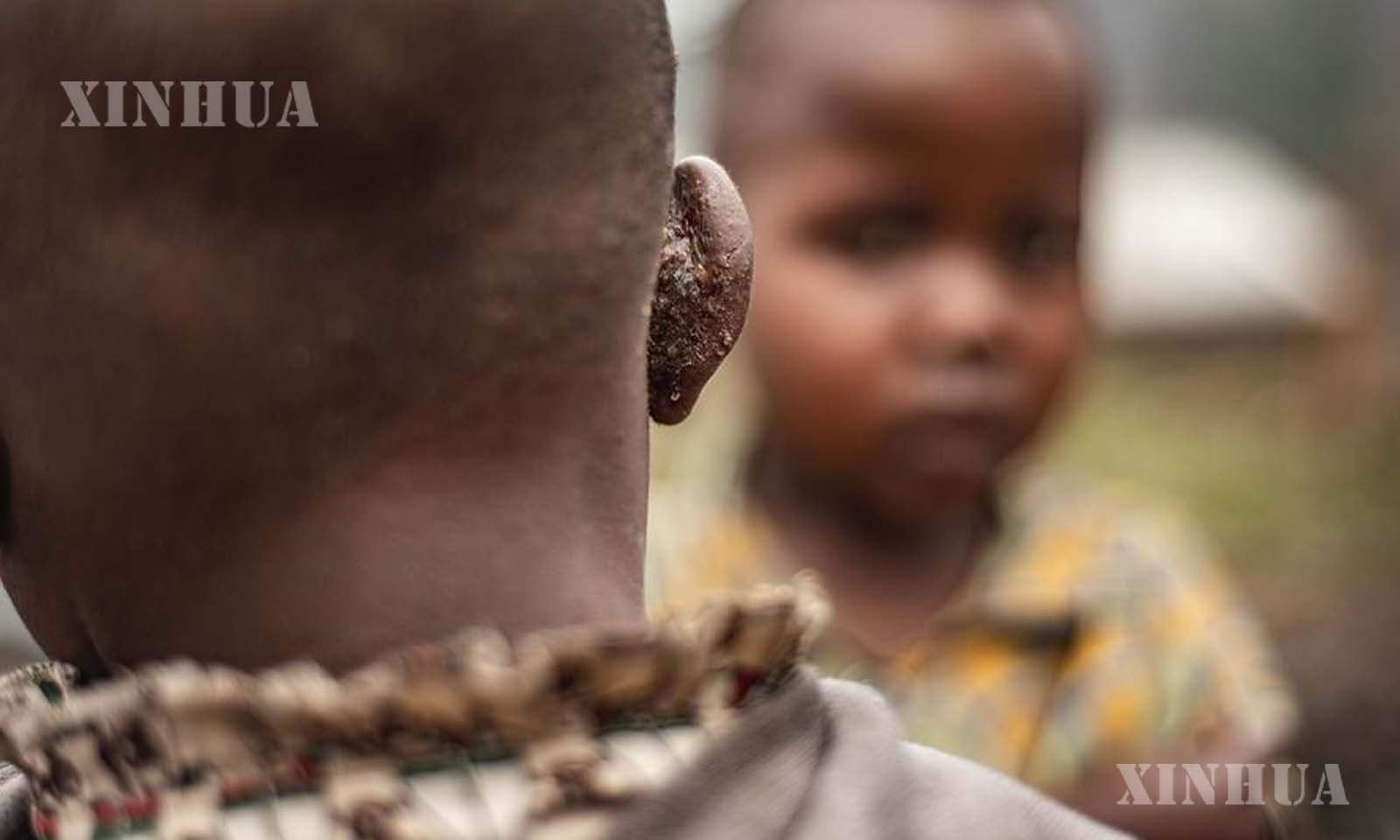
ပေကျင်း၊ ဩဂုတ် ၂၆ ရက် (ဆင်ဟွာ)
ကမ္ဘာ့ကျန်းမာရေးအဖွဲ့ (WHO) က မျောက်ကျောက်ရောဂါကို ကမ္ဘာလုံးဆိုင်ရာ ပြည်သူ့ကျန်းမာရေး အရေးပေါ်အခြေအနေ (PHEIC) အဖြစ် ယခုလအစောပိုင်းတွင် ကြေညာခဲ့ပြီးနောက် နိုင်ငံတကာ ရောဂါကူးစက်မှု ထပ်မံဖြစ်ပွားမည့် အလားအလာများကို တိုးမြှင့်သတိပေးလျက်ရှိသည်။
မျောက်ကျောက်ရောဂါ (mpox) သည် “ကိုဗစ်ရောဂါအသစ် မဟုတ်” ကြောင်း၊ သာမန်လူများတွင် ကူးစက်မှုအန္တရာယ် လွန်စွာနည်းပါးကြောင်း WHO ၏ ဥရောပဒေသဆိုင်ရာ ညွှန်ကြားရေးမှူး ဒေါက်တာ Hans Kluge က ပြောခဲ့သည်။
WHO အနေဖြင့် မျောက်ကျောက်ရောဂါ ကူးစက်မှုကို တိုးမြှင့်စောင့်ကြည့်လျက်ရှိပြီး ရောဂါကူးစက်မှု ကြိုတင်ကာကွယ်ရန်၊ ရောဂါကူးစက်ခံရသူများကို ကုသပေးရန်နှင့် အသက်သေဆုံးခြင်းမှ ကာကွယ်နိုင်ရန် ရောဂါဖြစ်ပွားသောနိုင်ငံများနှင့် အတူတကွဆောင်ရွက်မည်ဟု ကတိပြုထားသည်။
အာဖရိကမှ ရောဂါပျံ့နှံ့မှုအန္တရာယ်
မျောက်ကျောက်ရောဂါကို ယခင်ကမဖြစ်ပွားဖူးသည့်နိုင်ငံအများအပြား၌ လျင်မြန်စွာ မပျံ့နှံ့မီ ၂၀၂၂ ခုနှစ် ဇူလိုင်လကတည်းက PHEIC အဖြစ် ကြေညာထားခဲ့ခြင်းဖြစ်သည်။ ထိုရောဂါသည် ကမ္ဘာတစ်ဝန်း ရောဂါဖြစ်ပွားမှုကျဆင်းလာသဖြင့် ၂၀၂၃ ခုနှစ် မေလက PHEIC အဖြစ် ကြေညာထားမှုကို ဖြေလျှော့ခဲ့သည်။
အချိန်နှစ်နှစ်ကြာပြီးနောက် ကွန်ဂိုနိုင်ငံ (DRC) တွင် ရောဂါကူးစက်မှုဖြစ်ပွားခဲ့ကာ အခြားအိမ်နီးချင်းနိုင်ငံများထံ ပျံ့နှံ့ခဲ့ပြီးနောက် မျောက်ကျောက်ရောဂါကို PHEIC အဖြစ် WHO က ဒုတိယအကြိမ်အဖြစ် ကြေညာလိုက်ခြင်းဖြစ်သည်။
ယခုနှစ်အတွင်း မျောက်ကျောက်ရောဂါဖြစ်ပွားမှုသည် ယမန်နှစ်က စုစုပေါင်း အတည်ပြုလူနာ ၁၄,၀၀၀ ကျော်နှင့် သေဆုံးသူ ၅၂၄ ဦး ရှိခဲ့သော အရေအတွက်ထက်ကျော်လွန်သွားခဲ့ကြောင်း WHO အချက်အလက်များအရ သိရသည်။
အာဖရိက ရောဂါထိန်းချုပ်ကာကွယ်ရေးစင်တာ (Africa CDC) မှ အချက်အလက်များအရ ၂၀၂၄ ခုနှစ် နှစ်ဆန်းပိုင်းမှ ဩဂုတ် ၂၃ ရက်အထိ မျောက်ကျောက်ရောဂါဖြစ်ပွားနိုင်ခြေရှိသူ ၂၁,၄၆၆ ဦးနှင့် သေဆုံးသူ ၅၉၁ ဦး ရှိပြီဖြစ်ကြောင်း၊ ၎င်းတို့မှာ အာဖရိကသမဂ္ဂအဖွဲ့ဝင် ၁၃ နိုင်ငံမှ ဖြစ်ကြောင်း သိရသည်။
လက်ရှိ မျောက်ကျောက်ရောဂါဖြစ်ပွားမှုသည် လူသေဆုံးမှုပိုမိုမြင့်တက်စေသော ဗိုင်းရပ်စ်မျိုးဗီဇကွဲ Clade 1b ကြောင့် ပိုမိုဆိုးရွားခြင်းဖြစ်ကာ ယင်းမှာ လူသေဆုံးမှု ၃.၆ ရာခိုင်နှုန်းခန့်ရှိပြီး ယခင်မျိုးဗီဇထက် လူသေဆုံးမှု ပိုမိုမြင့်မားကြောင်း WHO ထံမှ သိရသည်။
“ကျွန်တော်တို့အနေနဲ့ ကလပ် ဝမ်း (clade one) ကြောင့် ဖြစ်ပေါ်လာတဲ့ ရောဂါကူးစက်မှုကိုတော့ မကိုင်တွယ်ရသေးပါဘူး။ အခြားမတူညီတဲ့နိုင်ငံတွေမှာ ကူးစက်မှုပုံစံအမျိုးမျိုး၊ ကူးစက်မှုအန္တရာယ်အမျိုးမျိုးရှိတဲ့ ကလပ်အမျိုးမျိုး ကူးစက်မှုတွေကိုတော့ ကိုင်တွယ်နေပါတယ်” ဟု WHO ညွှန်ကြားရေးမှူးချုပ်က ဆိုသည်။
ဥရောပ ရောဂါကာကွယ်ထိန်းချုပ်ရေးစင်တာ (ECDC) က မျောက်ကျောက်ရောဂါဖြစ်ပွားမှု အကဲဖြတ်မှုကို အဆင့်မြှင့်တင်ခဲ့ပြီး ဥရောပသမဂ္ဂ (EU) နှင့် ဥရောပစီးပွားရေးဧရိယာ (EEA) အတွင်း ရောဂါကာကွယ်မှု အသင့်ပြင်ထားရန်လည်း အကြံပြုထားသည်။
ဥရောပသည် clade I ဗိုင်းရပ်စ်ကြောင့် ပြင်ပမှပိုမိုဝင်ရောက်လာသော မျောက်ကျောက်ရောဂါဖြစ်ပွားမှုကို နေ့စဉ်လူမှုဘဝတွင် ရင်ဆိုင်နေရသည်။ EU/EEA ဒေသများအတွင်း ရောဂါကူးစက်မှုအန္တရာယ် နည်းပါးနေသော်ငြားလည်း ရောဂါရှာဖွေရေးနှင့် ထိရောက်သောထိန်းချုပ်မှုလုပ်ဆောင်ချက်များကို ကြိုတင်ပြင်ဆင်ရန်မှာ အရေးကြီးကြောင်း ဆွီဒင်အခြေစိုက် ECDC က ပြောခဲ့သည်။
ထို့ပြင် EU/EEA အဖွဲ့ဝင်နိုင်ငံများအနေဖြင့်လည်း ရောဂါဖြစ်ပွားသော ဒေသများသို့ သွားရောက် သို့မဟုတ် ပြန်လည်ရောက်ရှိသော တစ်ဦးချင်းခရီးသွားဧည့်သည်များအတွက် ခရီးသွားအကြံပေးချက်များ ထုတ်ပြန်ရန် ECDC က အကြံပြုထားသည်။
၁၉၅၈ ခုနှစ်က ဓာတ်ခွဲခန်းအတွင်းရှိ မျောက်များတွင်ပထမဆုံး တွေ့ရှိခဲ့သော မျောက်ကျောက်ရောဂါသည် ရှဉ့်၊ ကြွက်စသော တိရစ္ဆာန်များမှ လူများထံသို့လည်းကောင်း၊ လူအချင်းချင်းသော်လည်းကောင်း ကူးစက်တတ်သည်။
မျောက်ကျောက်ရောဂါ၏ ယေဘူယျလက္ခဏာများအနေဖြင့် အနီစက်ထွက်ခြင်း၊ ဖျားခြင်း၊ ခေါင်းကိုက်ခြင်း၊ ကြွက်သားနာကျင်ခြင်း၊ ခါးနာခြင်း၊ အားအင်ကုန်ခမ်းခြင်းနှင့် အရည်ကြည်ဖုထွက်ခြင်း၊ ပြန်ရည်အိတ်ရောင်ရမ်းခြင်းများဖြစ်သည်။
ကူးစက်မှုပိုမိုများပြားသော ဗိုင်းရပ်စ်မျိုးဗီဇကွဲ
ယခုနှစ် ကူးစက်မှုမြင့်မားနေသော မျောက်ကျောက်ရောဂါသည် Clade 1b ကြောင့်ဖြစ်ပြီး ၂၀၂၂ ခုနှစ်က ဖြစ်ပွားခဲ့သော Clade II အမျိုးအစားနှင့် နှိုင်းယှဉ်ပါက လူသေဆုံးမှုနှင့် ရောဂါကူးစက်မှု ပိုမိုမြင့်မားကြောင်း သတင်းများက ဖော်ပြထားသည်။
မျောက်ကျောက်ရောဂါဖြစ်ပွားမှုများသည် အလယ်အာဖရိကဒေသတွင် Clade I အမျိုးအစားဖြစ်ကာ အနောက်အာဖရိကတွင်မူ Clade II အမျိုးအစားဖြစ်သည်။ ထိုဗိုင်းရပ်စ်သည် ၂၀၂၂ ခုနှစ်မှစ၍ လိင်ဆက်ဆံမှုမှတစ်ဆင့် ကူးစက်တတ်သော “b” ဗားရှင်း ကလပ်ခွဲများအဖြစ် ပြောင်းလဲသွားခဲ့သည်။
ယမန်နှစ်က ကွန်ဂိုနိုင်ငံ (DRC) တွင် တစ်ကျော့ပြန်ဖြစ်ပွားချိန်မှစ၍ Clade 1b သည် ဘူရွန်ဒီ၊ ကင်ညာ၊ ရဝမ်ဒါ၊ ယူဂန္ဓာ စသည့် ယခင်ကမဖြစ်ပွားဖူးသည့် နိုင်ငံများအပါအဝင် အိမ်နီးချင်းနိုင်ငံများထံ ပျံ့နှံ့သွားခဲ့သည်။
ထိုသို့ပျံ့နှံ့ခဲ့ခြင်းသည် မျောက်ကျောက်ရောဂါကို ကမ္ဘာလုံးဆိုင်ရာ ပြည်သူ့ကျန်းမာရေး အရေးပေါ်အခြေအနေအဖြစ် WHO က ကြေညာခဲ့ခြင်း၏ အဓိကအကြောင်းအရာများအနက် တစ်ခုဖြစ်ကာ အချိန်နှစ်နှစ်ကြာပြီးနောက် ဒုတိယအကြိမ်အဖြစ် ထိုရောဂါအား ကမ္ဘာလုံးဆိုင်ရာ သတိပေးချက်အမြင့်ဆုံးအဖြစ် ထားရှိခဲ့ခြင်းဖြစ်သည်။
Clade 1b အမျိုးအစားသည် လူအချင်းချင်း လိင်ဆက်ဆံခြင်း အပါအဝင် နည်းလမ်းအမြောက်အမြားဖြင့် ကူးစက်နိုင်ခြေရှိကြောင်း Nature ဂျာနယ်က ဇွန်လဆောင်းပါးတစ်ခုတွင် ဖော်ပြထားသည်။ လိင်လုပ်သားများကဲ့သို့ ထိတွေ့ဆက်ဆံမှုများပြားသော လူနေထူထပ်သည့်နေရာများ၌ အဆိုပါဗိုင်းရပ်စ် ပျံ့နှံ့ပြီးဖြစ်ကြောင်းလည်း ဆောင်းပါး၌ ရေးသားထားသည်။
WHO ၏ ဥရောပဒေသဆိုင်ရာ ညွှန်ကြားရေးမှူး ဒေါက်တာ Hans Kluge က မျောက်ကျောက်ရောဂါက “ကိုဗစ်ရောဂါအသစ် မဟုတ်” ကြောင်းနှင့် သာမန်လူများတွင် ထိုရောဂါကူးစက်နိုင်ခြေ လွန်စွာနည်းကြောင်း အလေးထားပြောခဲ့သည်။
“မျောက်ကျောက်ရောဂါကို ဘယ်လိုထိန်းချုပ်ရမလဲဆိုတာ ကျွန်တော်တို့သိပါတယ်။ ဥရောပဒေသမှာ ရောဂါကူးစက်မှုတွေကို အတူတကွလျှော့ချဖို့ လုပ်ဆောင်ဖို့အဆင့်တွေလိုတယ်” ဟု ၎င်းက ဖြည့်စွက်ပြောခဲ့သည်။
WHO ဥရောပရှိ အရေးပေါ်ဝန်ဆောင်မှုဆိုင်ရာ အကြီးတန်းအရာရှိ Catherine Smallwood ကလည်း Clade I ရောဂါကူးစက်မှုကို ဆွီဒင်နိုင်ငံမှာ ဖော်ပြထားတဲ့သတင်းက ဥရောပ၌ တစ်ခုတည်းသော မျောက်ကျောက်ရောဂါ တွေ့ရှိမှုဖြစ်ကြောင်း၊ ထိုလူနာမှာ ရောဂါလက္ခဏာ အပျော့စားသာဖြစ်ပေါ်ကြောင်း ပြောကြားခဲ့သည်။
ရောဂါကာကွယ်မှု တိုးမြှင့်ဆောင်ရွက်
WHO အနေဖြင့် မျောက်ကျောက်ရောဂါနှင့် ထိတွေ့မှုရှိသောအုပ်စုများကို အကဲဖြတ်သတ်မှတ်ရန်နှင့် တုံ့ပြန်ဆောင်ရွက်မှုများ ဖော်ဆောင်ရန် လိုအပ်ကြောင်း WHO ပြောခွင့်ရပုဂ္ဂိုလ် Tarik Jasarevic က ဩဂုတ် ၂၀ ရက် သတင်းစာရှင်းလင်းပွဲ၌ ပြောကြားခဲ့သည်။
ကမ္ဘာ့နိုင်ငံများအနေဖြင့် ဗိုင်းရပ်စ်ရှိနိုင်ခြေရှိသော နေရာများကို ရှာဖွေရေးအတွက် စောင့်ကြပ်ကြည့်ရှုမှုစနစ်များ ထားရှိရန်နှင့် ရောဂါစစ်ဆေးမှုစွမ်းရည်များ မြှင့်တင်ထားရန် လိုအပ်ကြောင်း Jasarevic က ပြောခဲ့သည်။
ရောဂါကူးစက်နိုင်ခြေရှိသည့် အဓိကအုပ်စုများကလည်း သာတူညီမျှအရေးကြီးကြောင်း သိရသည်။
လွန်ခဲ့သောနှစ်နှစ်အကြာက ဥရောပရှိ ပြည်သူ့ကျန်းမာရေးအကြံပြုချက်က အသက်ဝင်နေဆဲဖြစ်ကြောင်း၊ ရောဂါကူးစက်မှုအများဆုံးဖြစ်သော ဥပမာ အမျိုးသားချင်း လိင်ဆက်ဆံမှုရှိသော အသိုင်းအဝိုင်းကို တိုက်ရိုက် ကိုင်တွယ်ဆောင်ရွက်ခဲ့ခြင်းကြောင့် ဥရောပတွင် မျောက်ကျောက်ရောဂါကို ထိန်းချုပ်ထားနိုင်ခြင်းဖြစ်ကြောင်း WHO က ဖြည့်စွက်ပြောခဲ့သည်။
ထို့ပြင် ရောဂါကူးစက်မှုမြင့်မားနိုင်ခြေရှိသည့် အသိုင်းအဝိုင်းအတွင်း နေထိုင်သူများကို အသရေဖျက်ခြင်း သို့မဟုတ် ခွဲခြားဆက်ဆံခြင်းမျိုး မပြုလုပ်ရန်မှာလည်း အရေးကြီးကြောင်း၊ ကျန်းမာရေးအခြေအနေကြောင့် ထိုသို့ခွဲခြားဆက်ဆံခံရသူအနေဖြင့် ရောဂါကူးစက်မှုကို ဂရုစိုက်တော့မည်မဟုတ်ဘဲ ကျန်းမာရေးစောင့်ရှောက်မှုအရည်အသွေးကိုလည်း ထိခိုက်စေနိုင်ကြောင်း၊ ရောဂါကူးစက်နိုင်ခြေအများဆုံးသူများအတွက် ကျန်းမာရေးဝန်ဆောင်မှုရရှိမှုမှာလည်း လျော့ကျလာနိုင်ကြောင်း WHO က ပြောကြားခဲ့သည်။ (Xinhua)
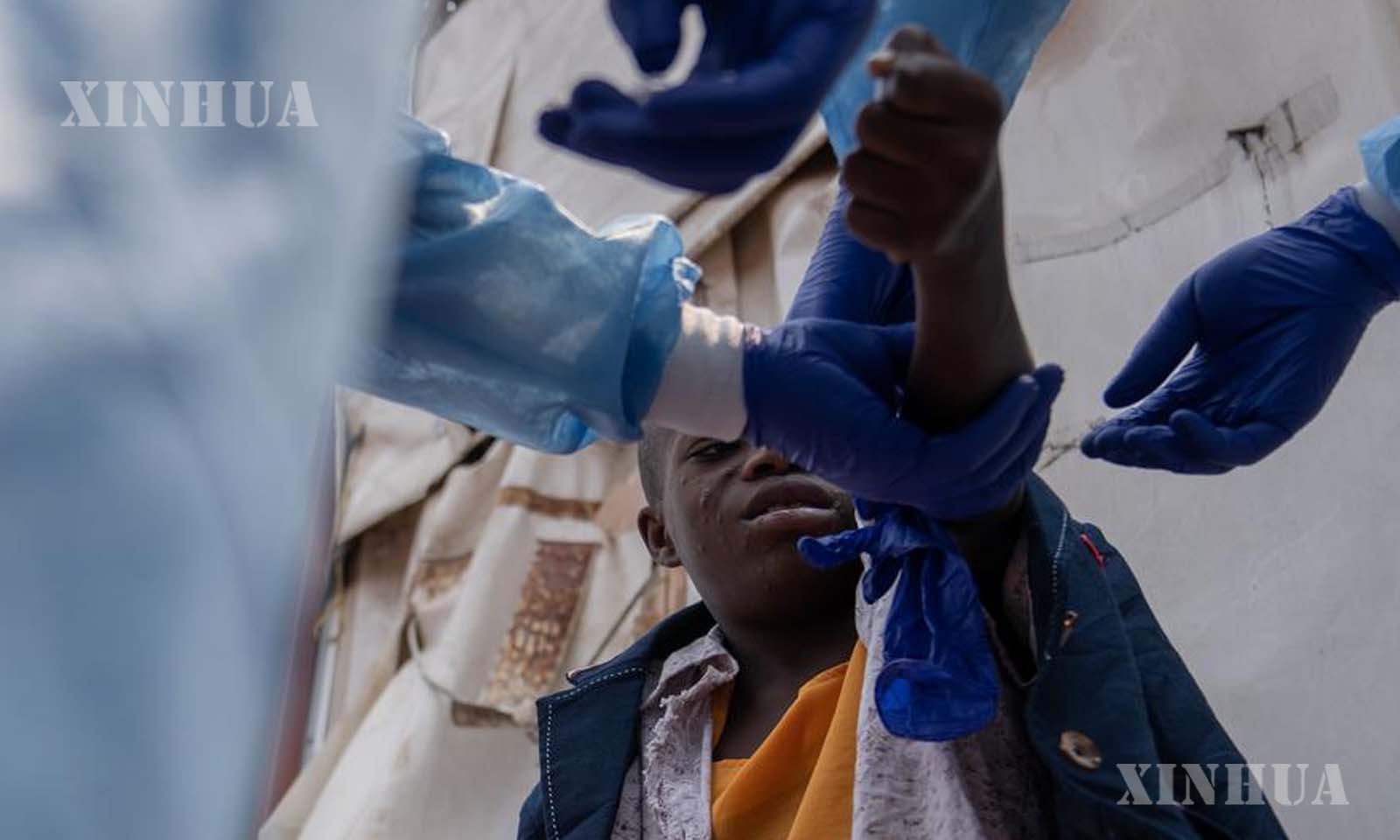
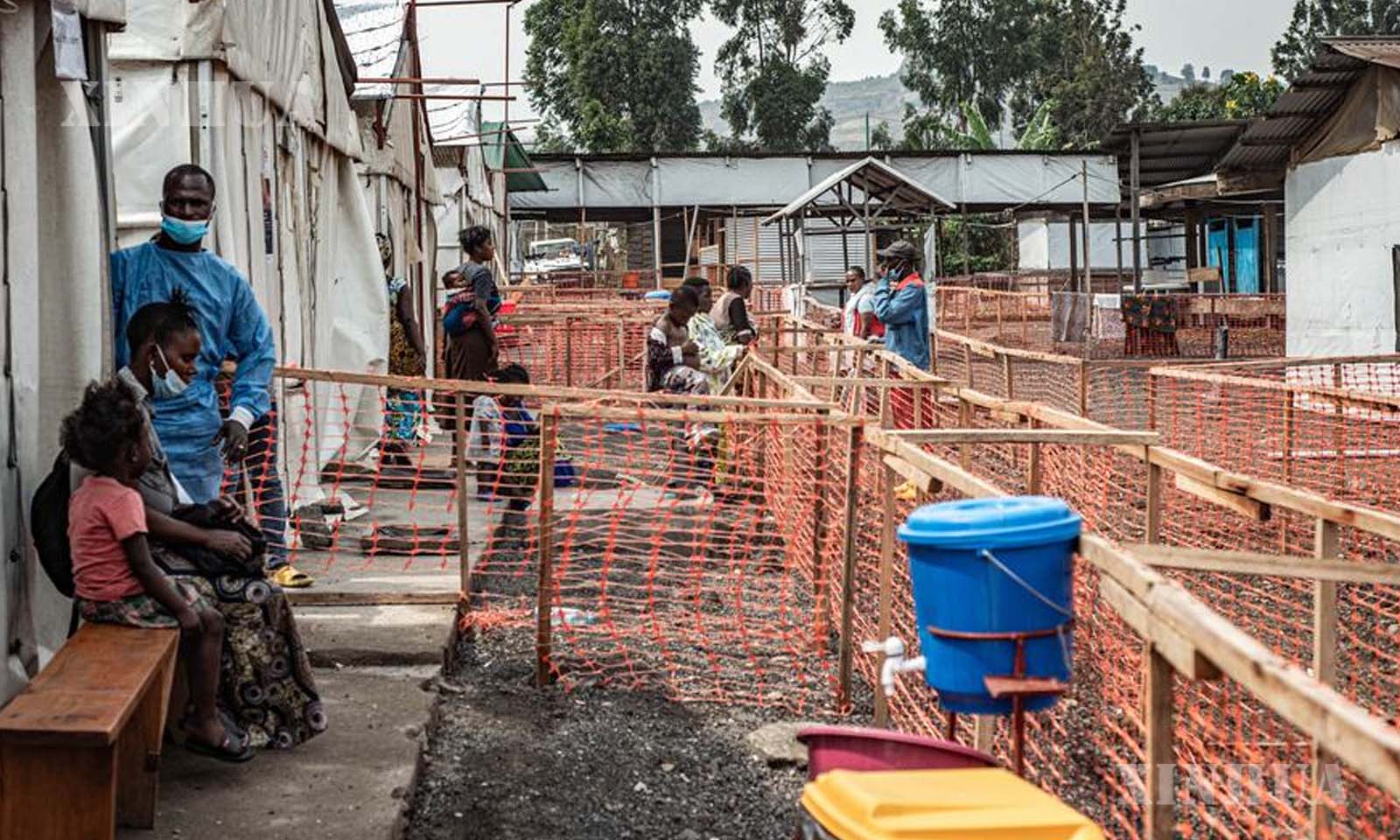
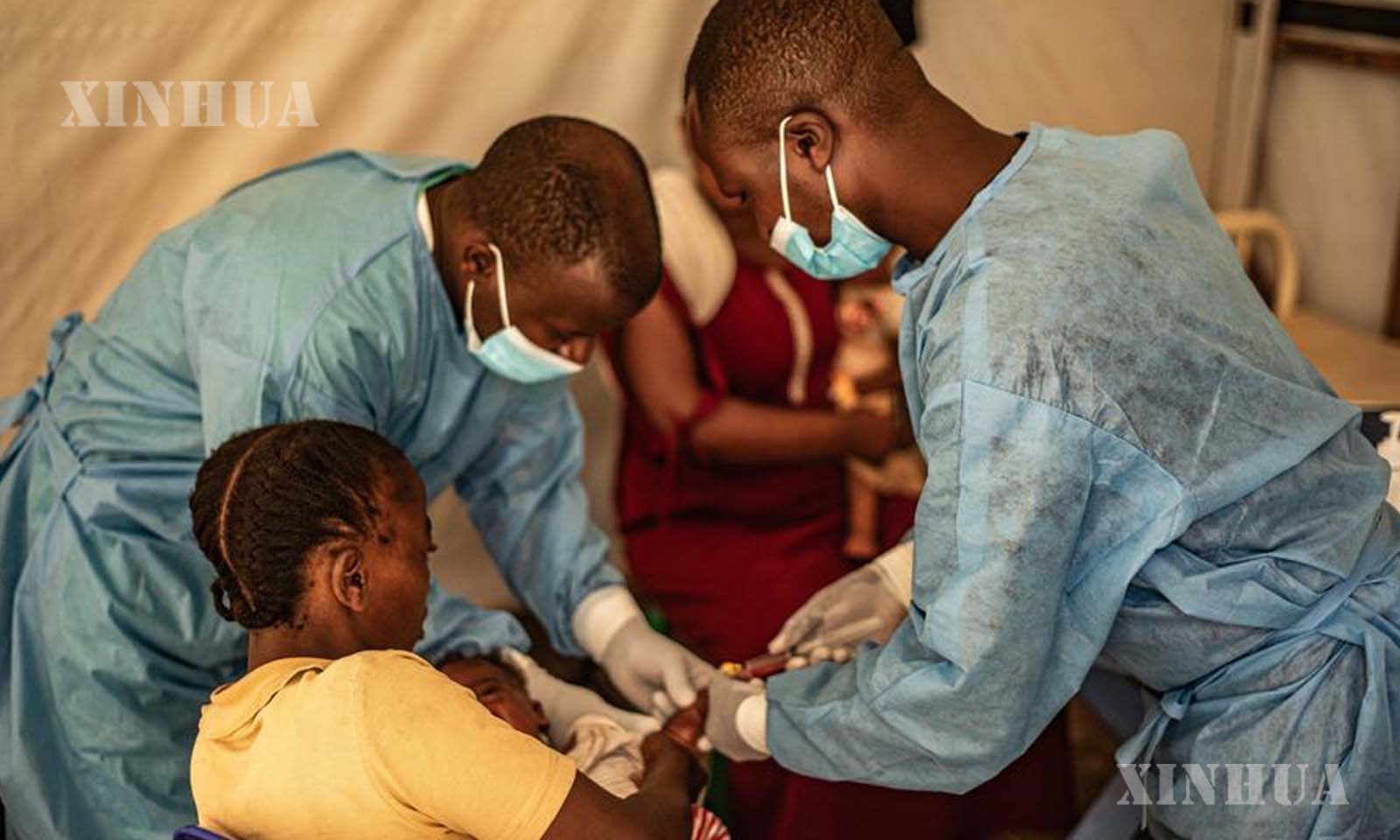
……………………………………..
(English Version)
World Insights: Mpox declared global public health emergency, preventive measures to be stepped up
BEIJING, Aug. 26 (Xinhua) — The World Health Organization (WHO) earlier this month declared monkeypox (mpox) a public health emergency of international concern (PHEIC), sounding the alarm over its potential for further international transmission.
Mpox is “not the new Covid” and the risk to the general population is low, the WHO’s regional director for Europe Dr. Hans Kluge has said.
The WHO has recommended enhancing monitoring of mpox transmission and is committed to working with each of the affected countries to prevent transmission, treat those infected and save lives.
RISKS OF SPREAD FROM AFRICA
In July 2022, the mpox outbreak was declared a PHEIC as it spread rapidly across a range of countries where the virus had not been seen before. That PHEIC was declared over in May 2023 after there had been a sustained decline in global cases.
It is the second time in two years that the WHO has declared mpox a PHEIC, following an outbreak of the viral infection in the Democratic Republic of the Congo that has spread to neighboring countries.
Mpox cases reported so far this year have exceeded last year’s total, with more than 14,000 cases and 524 deaths, according to WHO data.
Data from the Africa Centers for Disease Control and Prevention (Africa CDC) show that from the beginning of 2024 to Aug. 23, a total of 21,466 potential cases of mpox and 591 deaths have been reported from 13 African Union members.
According to the WHO, the current outbreak has been exacerbated by the emergence of a deadlier new variant of the virus, Clade 1b, with a mortality rate estimated at 3.6 percent, much higher than previous strains.
“We are not dealing with one outbreak of one clade; we are dealing with several outbreaks of different clades in different countries with different modes of transmission and different levels of risk,” said the WHO director-general.
The European Centre for Disease Prevention and Control (ECDC) has updated its risk assessment of the mpox outbreak, recommending heightened preparedness within the European Union (EU) and the European Economic Area (EEA).
Europe faces a high likelihood of more imported mpox cases from the clade I virus. Although the risk of sustained transmission within EU/EEA remains very low, it is important to prepare swift diagnosis and effective control measures, the Sweden-based ECDC said.
The ECDC advises EU/EEA member states to issue travel advisories for individuals traveling to or returning from regions affected by the outbreak.
Monkeypox, first detected in laboratory monkeys in 1958, is assumed to be transmitted from wild animals such as rodents to people, or from human to human.
The common symptoms of mpox are a rash, fever, headache, muscle aches, back pain, low energy, and swollen lymph nodes.
MORE INFECTIOUS NEW VARIANT
This year’s rising mpox cases are driven by Clade 1b, a variant more deadly and infectious compared to the Clade II prevalent in 2022, media reported.
Outbreaks of mpox have historically resulted from a zoonotic spillover of Clade I in Central Africa and Clade II in West Africa. Since 2022, each has morphed into a subclade, its sexually transmitted “b” version.
Since its emergence in the Democratic Republic of the Congo last year, Clade 1b has spread to neighboring countries, including Burundi, Kenya, Rwanda, and Uganda, where mpox cases had not been previously reported.
The spread is one of the main reasons why the WHO declared mpox a public health emergency of international concern, activating its highest level of global alert for mpox for the second time in two years.
Data suggest that Clade 1b can spread effectively among people in a variety of ways, including sexual contact, the journal Nature said in a June article, adding that the virus has already spread to densely populated areas, potentially carried by the highly mobile part of the population like sex workers.
Kluge on Tuesday said that mpox is “not the new Covid,” stressing that the risk from mpox to the general population is low.
“We know how to control mpox — and in the European region — the steps needed to eliminate its transmission altogether,” he added.
Catherine Smallwood, senior emergency services officer at WHO Europe, said that the Clade I infection reported by Sweden is the only mpox case detected in Europe, and that the patient only showed mild clinical symptoms.
ENHANCING PREVENTION
The WHO needs to assess the groups at risk of contracting mpox and develop countermeasures, WHO spokesperson Tarik Jasarevic told a press briefing on Tuesday.
Jasarevic said that countries need to have surveillance systems in place to find out where the virus was and enhance clinical testing capacity.
It was equally important to target key groups.
The public health advice of the last two years in Europe is still in place, the WHO said, adding that mpox in Europe could be controlled thanks to direct engagement with the most affected communities, for example, men who have sex with men.
The WHO said it remains important to inform persons in high-risk communities and avoid stigma and discrimination because “when there is stigma or discrimination related to a medical condition, people may not seek care quickly, the quality of health care may suffer, and access to health services for the most vulnerable is reduced.”
Photo: A child caught mpox is seen at a hospital in the Nyiragongo territory near Goma, North Kivu province, eastern Democratic Republic of the Congo (DRC), on Aug. 15, 2024. (Photo by Zanem Nety Zaidi/Xinhua)



